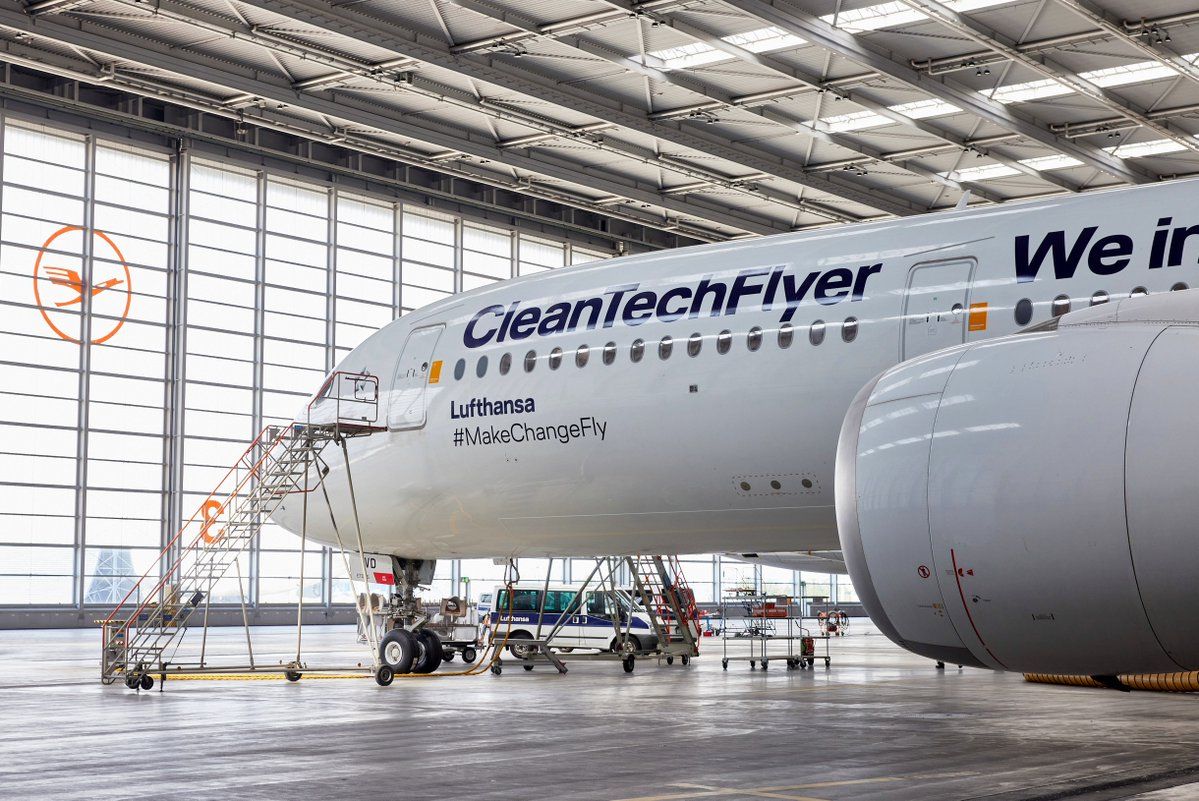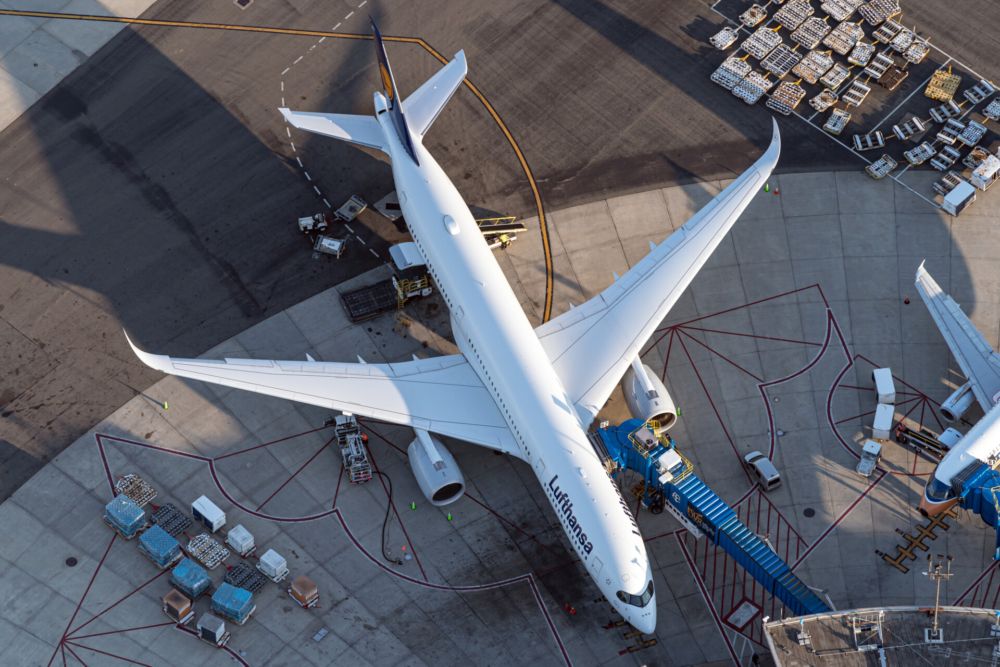After months of sneak previews and teases, German national carrier Lufthansa has established its first-ever CleanTechFlyer as the particular Airbus A350 has taken off on its maiden scheduled flight from Munich Airport. The aircraft will be the flying ambassador for the Lufthansa Group CleanTech Hub.
Flying clean to Canada
This special Airbus A350-900 is registered D-AIVD, one of the newer aircraft to join the German carrier's fleet on April 28th of this year. Interestingly, the aircraft is three years old, having previously flown for a different national carrier, Philippines Airlines.
Decked in all-white special livery with the inscription, "We innovate for cleaner aviation," D-AIVD took off on its first-ever scheduled flight from Munich at 16:17. The aircraft is operating as LH476 and is on a 9 hours and 28 minutes flight bound for Vancouver, probably touching down just past 17:00 local time.
Cleanest in the fleet
While Lufthansa boasts an extensive fleet of aircraft ranging in size, its long-haul Airbus A350 is undoubtedly the cleanest and most modern of them all. Fuel consumption has been reduced to around 2.5 liters of kerosene per passenger per 100 km flown, which is about 30% less than its predecessor models.
The percentage has an immediate positive impact on carbon dioxide emissions. In addition, the advanced engines, ultramodern materials, and an aerodynamic design produce a noise footprint up to 50% smaller than that of similar aircraft types. Thus, an all-white Airbus A350 dedicated to drawing attention to the German carrier's sustainability initiatives is perfect for the goals of the Lufthansa CleanTech Hub.
Introducing the CleanTech Hub
Launched in the summer of 2021, the Lufthansa Group CleanTech Hub is a competence center for climate protection technologies, bundling the know-how of airlines with creations from the global startup and science industries. Fixed with a goal to significantly reduce carbon emissions and even non-carbon emissions, waste, and noise within the Lufthansa Group flight operations within the next two to four years, the CleanTech Hub focuses on essential topics such as Sustainable Aviation Fuels, retrofits, digital solutions, and waste reduction.
The Airbus A350 has a focus area of aircraft-related hardware. This particular focus area touches on projects and research intended to improve every aspect of aircraft that positively impacts fuel consumption, aerodynamics, and noise emission. Lufthansa wants to develop innovative aircraft technologies from nose to tail, components, modifications, and retrofits by combining aircraft ecosystem and value chain expertise with aircraft technologies specialists to understand and explore all options of aircraft processes and their hidden optimization opportunities.
One exciting technology includes sharkskin technology, as Lufthansa Technik partnered with BASF to develop an adhesive bionic film that replicates the skin of sharks, given how sharks are efficient in drag reduction. Known as AeroSHARK, the bionic film has microscopic properties that consist of eponymous riblets. Once the AeroSHARK is applied to an aircraft, the riblets achieve efficiency gains by reducing skin friction and drag, similar to their natural counterparts. They can also improve lift if attached to wings.
Later this year, Lufthansa Cargo plans to equip each Boeing 777F freighter aircraft with around 800 m2 of AeroSHARK. The expected drag reduction will result in annual fuel savings of 3,700 metric tons and a carbon emissions reduction of 11,700 tons for ten aircraft. Scaling up this savings potential to a global fleet of around 24,000 aircraft, AeroSHARK could save approximately two million tons of kerosene and about 6.3 million tons of carbon dioxide every year.
The sustainable line
The choice to use the Airbus A350 as a flying ambassador for the CleanTech Hub was wise, as the new-generation widebody is the epitome of clean and green as possible in the history of giant birds. Lufthansa CleanTech Hub has undoubtedly drawn out the innovative cards for sustainability within the aviation industry, and it would be interesting to see more aircraft being fitted with exciting technology such as AeroSHARK.
And it would seem the all-white livery has done its part to draw the needed attention, as ITA Airways also plans to present an all-white aircraft, yet another Airbus A350, that would refer to its own sustainability initiatives.



-1.jpg)